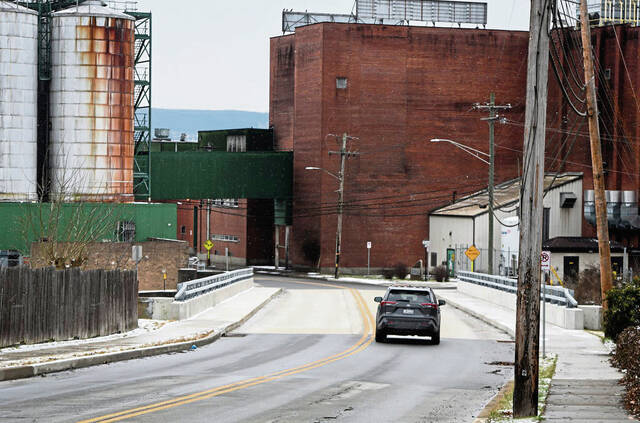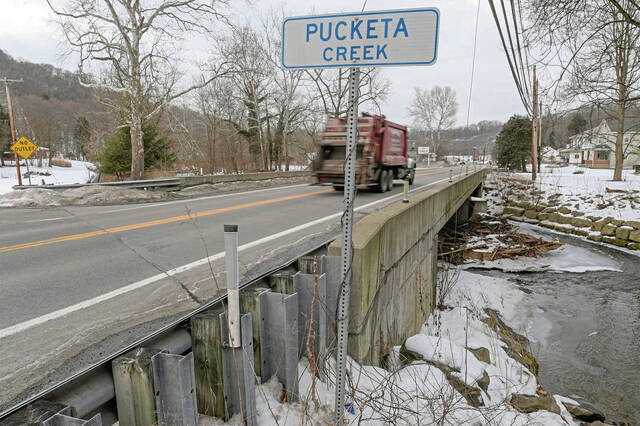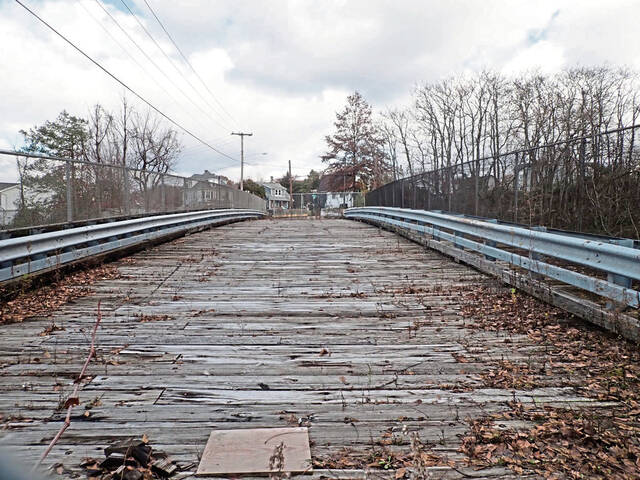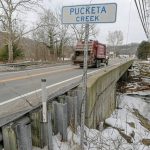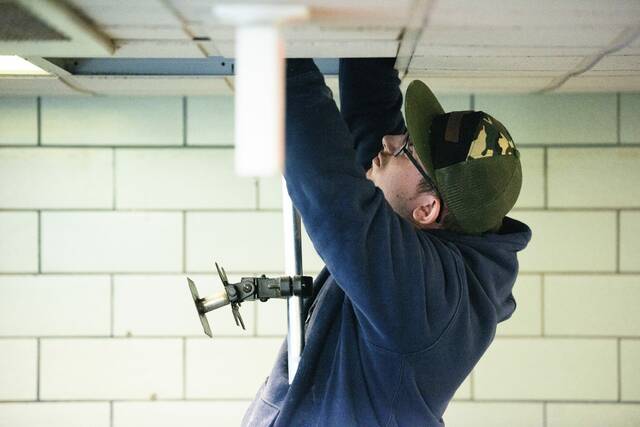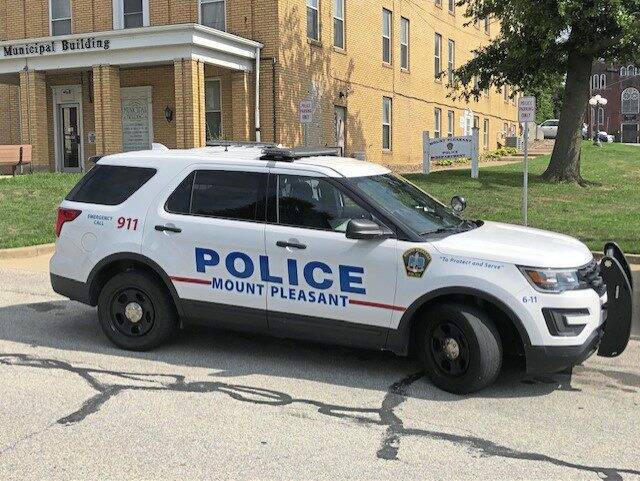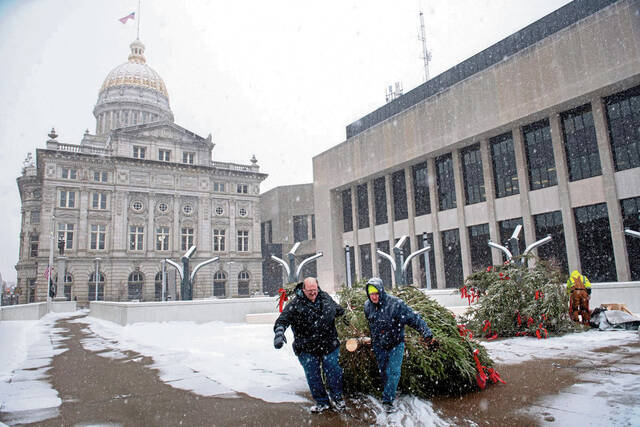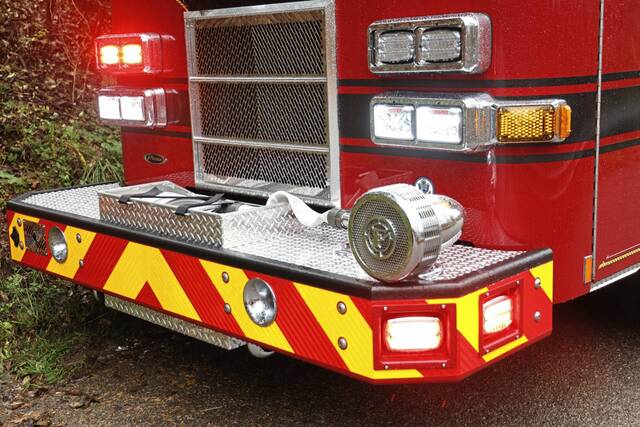It took less than 11 months to replace Pittsburgh’s Fern Hollow Bridge after it collapsed in Frick Park.
The speed of the bridge replacement project was an achievement — it normally takes three to five years to replace a span of that size, officials said. Emergency declarations from state and local governments, along with a personal interest from President Joe Biden, helped to expedite the project.
But what about the hundreds of other bridges in Southwestern Pennsylvania that are rated in poor condition? How much progress has been made on repairing or replacing them since Fern Hollow Bridge collapsed one year ago?
Ratings data from PennDOT show mixed results.
In Allegheny and Westmoreland counties, the number of locally owned bridges (those maintained by county and municipal governments) in poor condition decreased over the past year, from 158 a year ago to 145 today, according to PennDOT reports.
However, the number of state-maintained bridges in poor condition ticked up over the past year, from 160 a year ago to 175 today.
In total in Allegheny and Westmoreland counties, there are two more poorly rated bridges today than there were a year ago, the PennDOT reports showed. There are nearly 2,500 bridges listed in the reports.
Transportation officials stress that a poor rating doesn’t mean a bridge is unsafe to drive on or on the verge of collapse.
They added that the number of structurally deficient bridges in the region has shrunk dramatically since the early 2000s.
Moving forward, officials said there will be signs of improvement — particularly for locally owned bridges — but they warn that uncertainty in funding and increased labor costs will make it difficult to fully repair every bridge.
PennDOT District 11 Executive Cheryl Moon-Sirianni said it would take more than just increased funding to repair all poorly rated bridges.
“My boss posed that question: how to get down to zero?” she said. “And it is not just the funding. You would need to ramp up all the state agencies, ramp up all the local utility companies. It’s even hard right now to get the railroad companies to respond to your requests.”
Mixed results
Over the past year, Allegheny County’s number of locally owned bridges 20 feet or longer that are poorly rated dropped from 80 to 75. In Westmoreland County, the number dropped from 78 to 70.
While those numbers show improvement, the percentage of poorly rated bridges is still higher than some officials would like.
About 18% of Allegheny County’s locally owned bridges are in poor condition. In Westmoreland County, 40% are — one of the highest rates in the state.
Fern Hollow Bridge stories
• The lives of a group of strangers intersected on a snowy Pittsburgh morning when the Fern Hollow Bridge collapsed• 3 more people injured in Fern Hollow Bridge collapse sue City of Pittsburgh
• NTSB releases new Fern Hollow Bridge data
Allegheny County Public Works spokesman Brent Wasko said the county operates 305 bridges that are 8 feet or longer. At the start of last year, the county had 27 bridges rated in poor condition, but that number has fallen to 20 through repairs, replacements or demolitions.
Westmoreland County engineer Vaughn Neill said his county was able to move one of its bridges — the Ligonier Street Bridge in Latrobe — out of the poorly rated category last year. There are now three county-owned bridges in Westmoreland County that are rated in poor condition, and two are posted with weight limits.
As for state-maintained bridges that are at least 8 feet long, Allegheny County has 98 that are in poor condition, up from 95 a year ago. In Westmoreland County, there are 77 state-maintained bridges in poor condition, up from 65 a year ago.
About 8% of Allegheny County’s state-maintained bridges are in poor condition, compared with 10% in Westmoreland County. The state-maintained bridges tend to be larger and carry higher volumes of traffic than locally owned ones.
Jeremy Hughes, bridge engineer for PennDOT’s District 12, said bridges are rated on a scale of 0 to 9, with ratings of 4 or less considered poor. He said PennDOT has placed a focus on preserving bridges that are at or near a rating of 4 — instead of letting bridge conditions drop to the bottom of the ratings scale where large-scale rehabs or replacements would likely be needed.
Over the past decade or so, there has been significant improvement.
Wasko said Allegheny County has seen a 72% reduction in the number of poorly rated bridges since 2012.
In PennDOT’s District 11, which includes Allegheny, Beaver and Lawrence counties, 32% of the state-maintained bridges were in poor condition in 2007. Today, about 8% are, Moon-Sirianni said.
“That is a huge drop,” she said.
Hughes said District 12, which includes Westmoreland, Fayette, Greene and Washington counties, also has seen improvement since the early 2000s, when some bridges were being inspected every day because of their condition.
Bridges typically get inspected every two years, with newly constructed bridges seeing inspections every four years, Hughes said. Bridges in poor shape are inspected more frequently.
Reports showed that over the years Pittsburgh failed to act after several inspections recommended action on Fern Hollow Bridge. A specific cause for the collapse has not yet been determined by federal investigators, but Pittsburgh officials have upped bridge inspection efforts across the city since the collapse.
Last December, Pittsburgh officials released a report that reviewed 145 of the city’s bridges. It found that 32 were in poor condition, but none of the bridges had structural problems that warranted a closure. The city said 13 of the bridges had structural problems that needed to be addressed immediately.
The report also noted that the city had 30 work orders in motion as of December to resolve issues at bridges most in need of repairs.
“I’m glad we found out the things we didn’t know,” Pittsburgh Mayor Ed Gainey said in December. “It’ll be better when every bridge is taken care of.”
Uncertain future
For Allegheny County-maintained bridges, the future looks promising.
Of its 20 poorly rated bridges, five are expected to undergo repairs in 2023. Wasko said the county is planning to work on 13 other poorly rated bridges through 2025, and design work has begun on improvements for the remaining two poorly rated bridges.
Allegheny County Public Works Director Stephen Shanley said the county has been aggressive at rehabbing bridges that are on the lower end of fairly rated, before they become poorly rated. He cited as an example Pittsburgh’s Roberto Clemente Bridge, which is undergoing repairs now.
Westmoreland County is doing design work in advance of projects on five poorly rated bridges. They include the Fourth Street Bridge in North Irwin, which has been closed since 2014, and 1960s-era bridges that span Loyalhanna Creek in Latrobe, Derry Township and Ligonier Township.
In Allegheny County and the rest of PennDOT’s District 11, Moon-Sirianni said inflation is making repairs more costly, and labor shortages across the construction industry make it difficult to increase the pace at which repair projects can be completed.
Hughes and Moon-Sirianni said funding is always an obstacle. The $1.2 trillion infrastructure bill passed in 2021 has provided a boost and allowed PennDOT to keep up the pace of repairs.
“The smaller bridges had a nice pot of money in the (infrastructure funding package), but that doesn’t touch the needs of all our bridges,” Moon-Sirianni said.
Last year, former Gov. Tom Wolf and the Legislature reached an agreement to reduce the state police allocation from the state’s transportation fund by $175 million, freeing up money to help the state try to leverage more federal funding for bridge and road work.
Moon-Sirianni said she is confident in PennDOT’s inspection process, noting that her district closed Millers Run Road Bridge in South Fayette on Christmas Eve after inspectors discovered advanced deterioration.
She said the Fern Hollow collapse was a dark moment for the region, but it did manage to shine a light on the importance of investing in bridges.
“The collapse did alert a lot of people to the importance of investing in bridges,” she said. “When you have the president there on the bridge, that says maybe we haven’t invested as much as we thought.”


